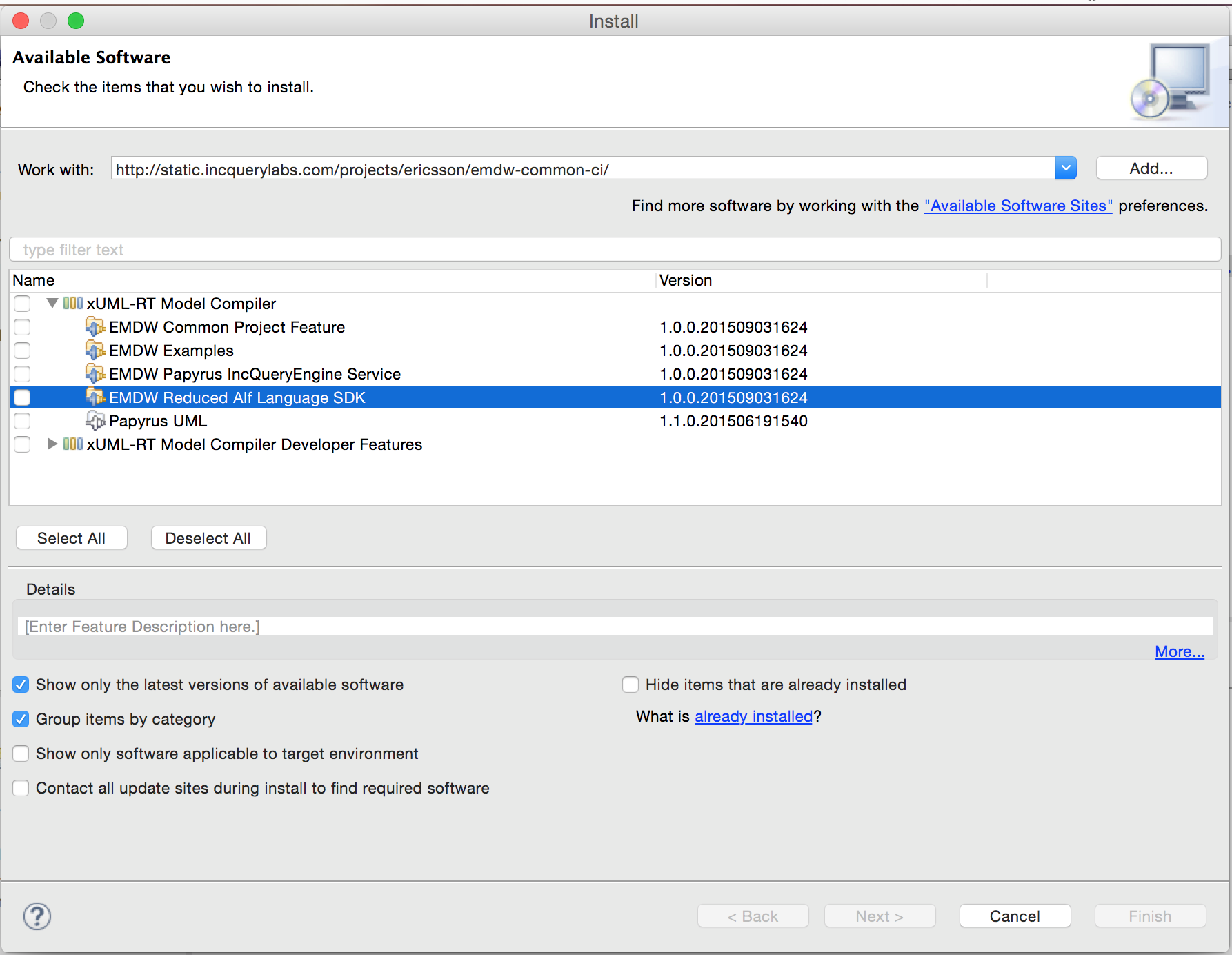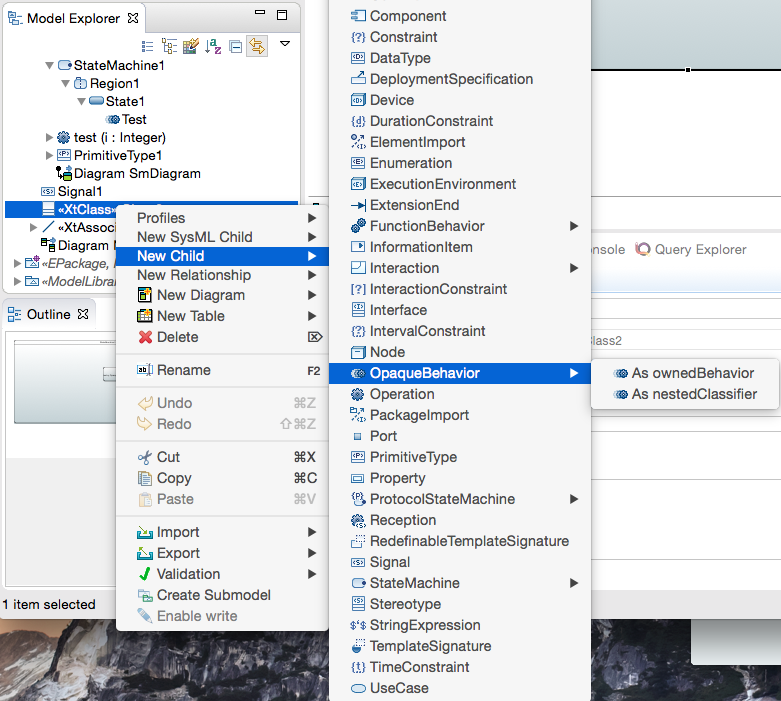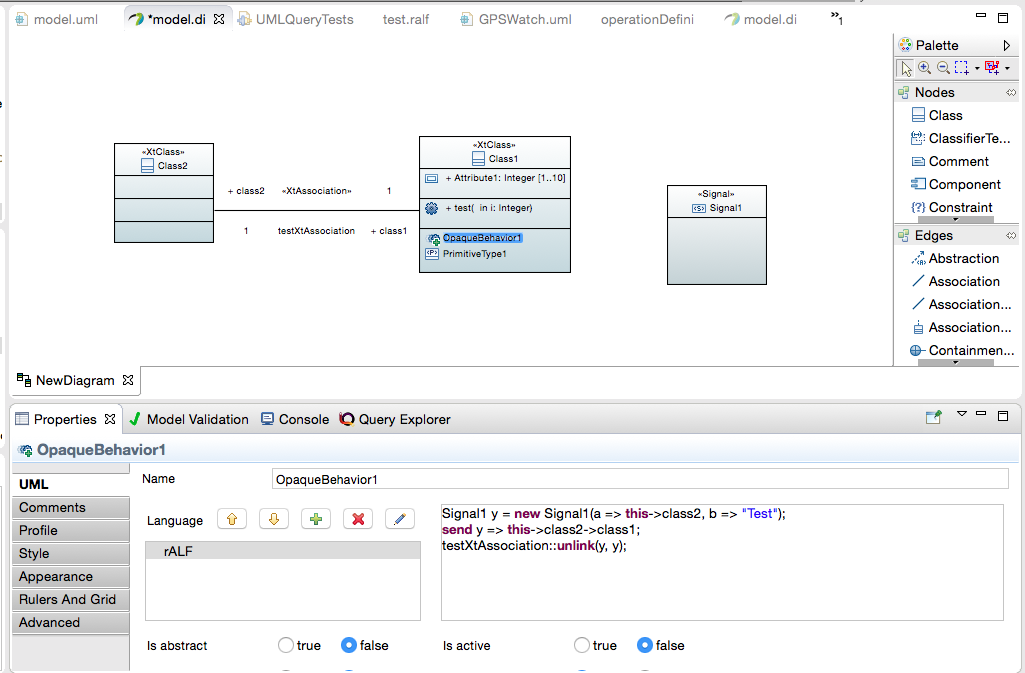-
Notifications
You must be signed in to change notification settings - Fork 1
rALF Getting Started
Ákos Horváth edited this page Apr 4, 2016
·
11 revisions
The first steps to get along with the language is to check its language reference. However, anybody familiar with Java or C++ can get along with the language quite easily.
- Open the EMDW update site:
http://static.incquerylabs.com/projects/ericsson/emdw-common-ci/ - Download the Reduced Alf Language SDK feature

rALF can be used three different ways:
- It is integrated into the Properties view of OpaqueBehaviour instances.
- Text files with ralf extension can be edited. In this mode, UML references cannot be used (only statements and expressions with built-it types).
- Programmatically, see rALF-API-Usage
Opaque behaviors can be added to a class using the popup menu from the Model Explorer view, and then the created behavior can be edited directly in the Properties view.

An Opaque Behaviour can also be created directly in the 'Properties' view of a State Diagram by adding a new Entry/Exit action for a state.

With an Opaque Behaviour selected, the Properties view allows the selection of a definition language (use rALF), and after that the creation of code.

- At first run, it is possible that the rich text editor of rAlf is not available right after installation. Issue 22 describes two possible workarounds: either create a new OpaqueBehavior with rAlf snippet; or open the Embedded editors preference page of Papyrus.
- The content assist can offer elements that are not applicable at the current location. However, the inserted element should be correctly marked as invalid.
- Open bugs